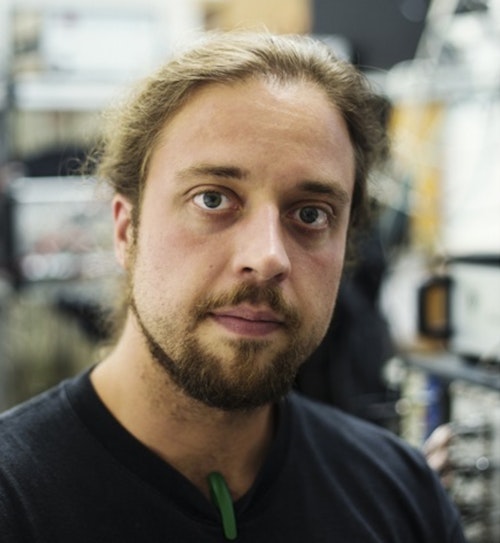Gauss and tesla
What do the units gauss and tesla represent?
Gauss and tesla are different units of measurement for magnetic flux density. The following applies: 10 000 gauss = 1 tesla and therefore 1 gauss = 0,0001 tesla. Often, the strength of a magnetic field is simply stated in tesla, which is strictly speaking not entirely correct, as the magnetic flux density is defined somewhat differently than the magnetic field. Gauss was a 19th-century mathematician who contributed to the development of the magnetometer for measuring magnetic field strengths in 1831. Tesla was a physicist of the 19th/20th century who worked extensively in the field of electromagnetism.Table of Contents
Magnetic flux density,
which is abbreviated in physics by the letter B,
is measured in the units gauss or tesla.
The following applies: 10 000 gauss = 1 tesla.
A magnetised ferromagnetic material becomes a magnet whose strength is described by remanence.
Gauss and tesla are, therefore, also the units of remanence of a permanent magnet.
The gauss unit is a unit of magnetic flux density composed of the natural or fundamental units in the so-called "cgs system". The cgs system uses the length unit cm, the mass unit gram (g) and the time unit second (s) as fundamental units. Similarly, the unit tesla is the unit of magnetic flux density in the currently valid SI system (international system of units). In the SI system, kilograms are used instead of grams, metres instead of centimetres and the second is used to measure time.
Since the magnetic field strength, and thus the magnetic flux density, can be calculated from the force between moving charges, the gauss or tesla unit itself is not a fundamental unit. The following relationship applies
\( 1 T = 1\frac{N}{A \cdot {m}}\)
1 tesla is therefore one newton per ampere and metre.
This means that 1 tesla is equivalent to the magnetic flux density that exerts exactly 1 newton of attractive force
on a 1-metre-long conductor through which 1 ampere of current flows (due to the magnetic effect of the current in the conductor).
The magnetic field strength H can be determined from the magnetic flux density B. To do so, the magnetic flux density B must be divided by the permeability of the material μ and the permeability of the vacuum μ0:
\( H = \frac{1}{\mu\mu_0}\cdot {B}\)
The unit tesla is often found in literature as a measure of magnetic field strength. However, this is not entirely correct. As mentioned, gauss and tesla are the units of magnetic flux density and the magnetic field strength itself is stated in the SI system with the unit ampere per metre (A/m) or oersted (1 oersted = 79,577 A/m).
The names behind the units of gauss and tesla
The magnetic flux density units of gauss and tesla were named in honour of the mathematician Johann Carl Friedrich Gauss and the inventor and engineer Nikola Tesla, respectively.Information about J.C.F. Gauss
Johann Carl Friedrich Gauss (1777 - 1855) was not just a mathematician, but a man of many interests who made outstanding discoveries in the fields of mathematics, astronomy and physics. Best known is the 'Gaussian bell curve' discovered by Gauss, which is also known as normal distribution in statistics. In physical terms, the normal distribution correctly describes the distribution of random measurements. It was not until 1831 that Gauss contributed to the development of the magnetometer, a measuring device for magnetic field strengths. He also contributed to the invention of the first electromagnetic telegraph. Together with the physicist Weber, Gauss developed the cgs unit system.Information about Nikola Tesla
Nikola Tesla (1856 - 1943) was an electrical engineer who created numerous inventions in the field of alternating current technology throughout his life. Among other things, he contributed to the fact that alternating current technology is used to transmit energy in today's power grid and not direct current technology as developed by Edison. Tesla's inventions include the Tesla transformer for generating high-frequency alternating currents, the first radio transmitter and the first remote control. Throughout his life, Tesla worked on transmitting electromagnetic energy wirelessly via electromagnetic waves. He had already considered using the reflection of radiation from the earth's atmosphere to transport energy over long distances along the earth's surface.Detailed information about Nikola Tesla can be found in the magnetism glossary under Nikola Tesla.

Author:
Dr Franz-Josef Schmitt
Dr Franz-Josef Schmitt is a physicist and academic director of the advanced practicum in physics at Martin Luther University Halle-Wittenberg. He worked at the Technical University from 2011-2019, heading various teaching projects and the chemistry project laboratory. His research focus is time-resolved fluorescence spectroscopy in biologically active macromolecules. He is also the Managing Director of Sensoik Technologies GmbH.
Dr Franz-Josef Schmitt
Dr Franz-Josef Schmitt is a physicist and academic director of the advanced practicum in physics at Martin Luther University Halle-Wittenberg. He worked at the Technical University from 2011-2019, heading various teaching projects and the chemistry project laboratory. His research focus is time-resolved fluorescence spectroscopy in biologically active macromolecules. He is also the Managing Director of Sensoik Technologies GmbH.
The copyright for all content in this compendium (text, photos, illustrations, etc.) remains with the author, Franz-Josef Schmitt. The exclusive rights of use for this work remain with Webcraft GmbH, Switzerland (as the operator of supermagnete.de). Without the explicit permission of Webcraft GmbH, the contents of this compendium may neither be copied nor used for any other purpose. Suggestions to improve or praise for the quality of the work should be sent via e-mail to
[email protected]
© 2008-2025 Webcraft GmbH
© 2008-2025 Webcraft GmbH
